The Sumida River is an expansive body of water that runs through Tokyo. Being that the river is so vast, there are multiple bridges that run over the river, as well as sights to see along the path of the river. There is even a major fireworks festival held near the Sumida River every year, and it happens to be the longest-running fireworks display in Japan.
Visitors to Tokyo often have the Sumida River on their itinerary as one of the must-see attractions to experience. This is partially because of the amazing attractions along the blue water that traverses the city throughout the day.
The Sumida River in Tokyo runs through the heart of the city. It runs into Tokyo Bay after branching off from the Arakawa River in Iwabuchi. The Kanda and Shakujii rivers are among its tributaries. It runs through the Tokyo wards of Kita, Adachi, Arakawa, Sumida, Taito, Koto, and Chuo.
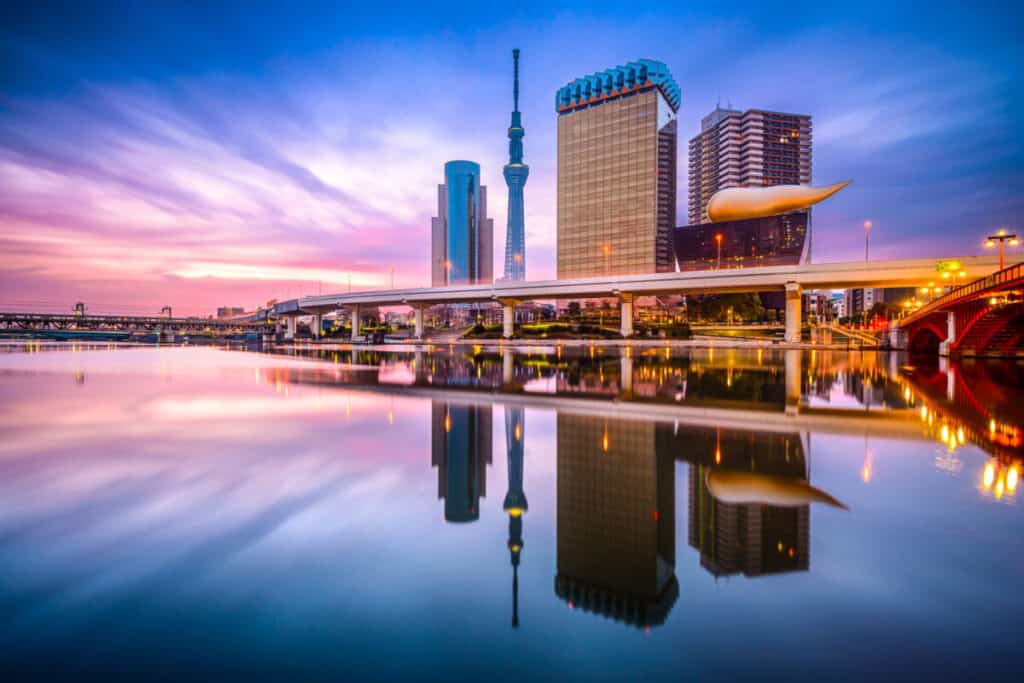
There are also many attractions along the river to experience that all the senses can be ignited at once. Sumida River also carries a lot of history and is a monumental area full of history and relationship of Tokyo’s development and growth.
The Significance Of The Sumida River
The Sumida River is well-known around Japan, being a place of significance to Japanese history as well as a common area referenced in popular media throughout Japan.
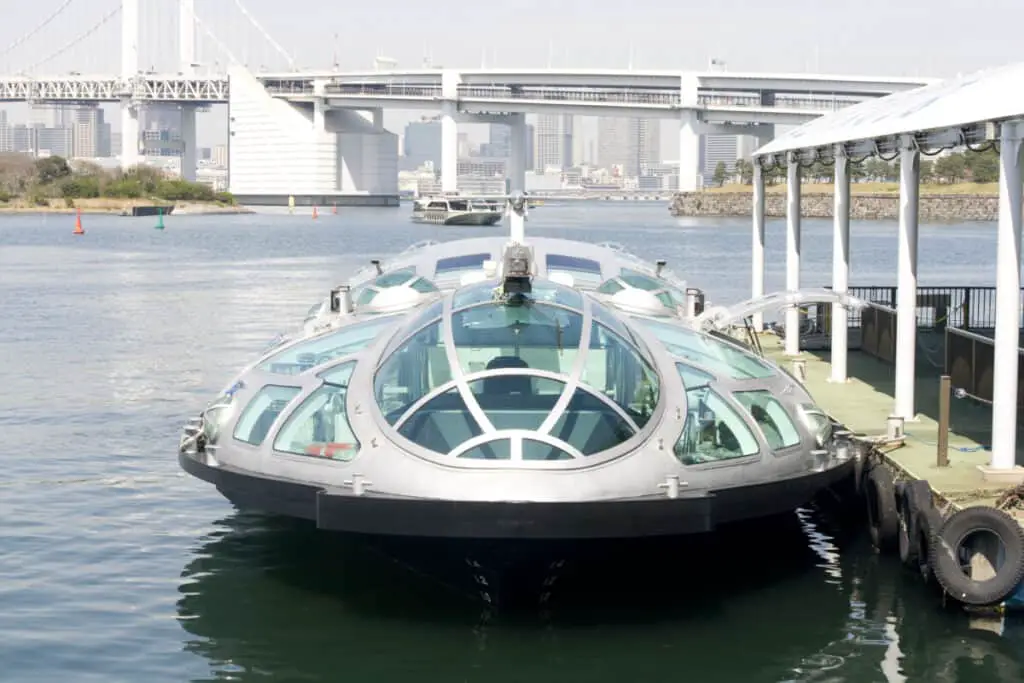
While it’s a common area for tourists to visit every year, locals also enjoy taking in the scenery and visiting the various attractions surrounding the river.
Back in the Edo period, the Sumida River was commonly used for transporting goods throughout Tokyo. This was around the time when Edo was growing and Tokyo became the capital of Japan.
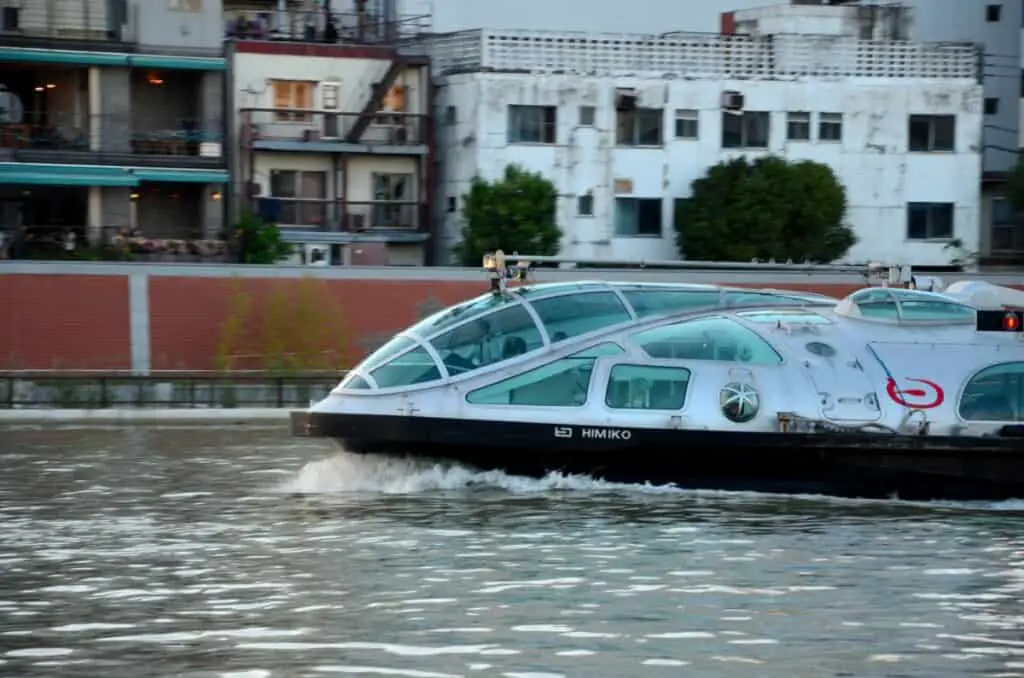
A lot of the development that allowed Tokyo to flourish was done around the Sumida River.
10 Sights And Attractions Along The Waterway
With the Sumida River being such a long body of water, there are endless opportunities to enjoy the river’s beauty from many areas.
There are also plenty of things to do and some attractions and landmarks to experience close to the river. Many cruises and boat rides are available for you to partake in to get as much of a view of the Sumida River’s surroundings as possible.
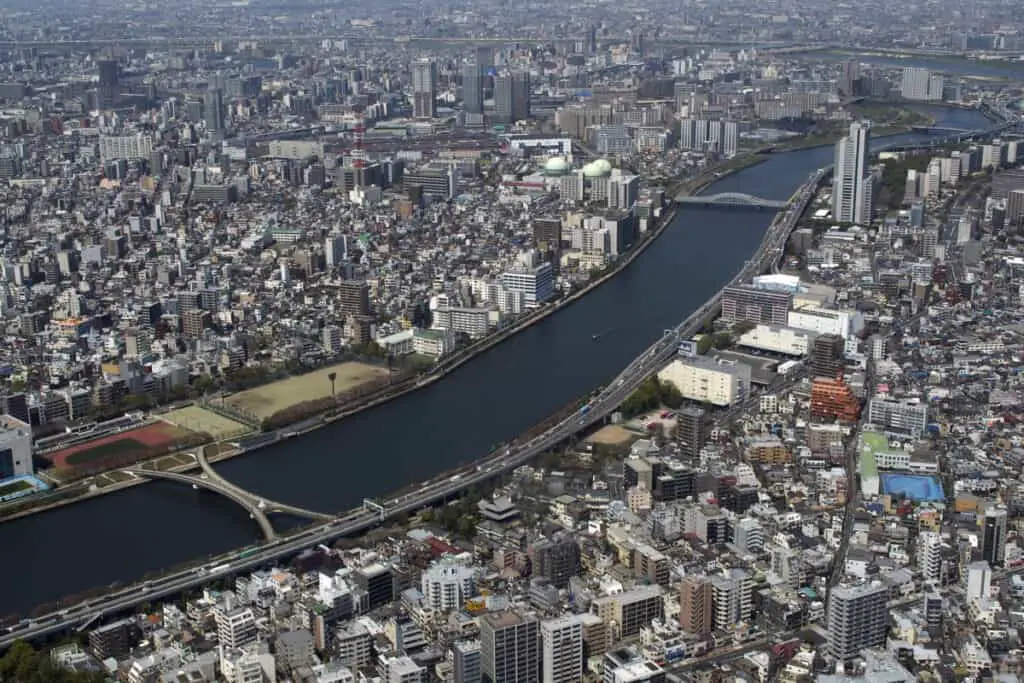
It’s recommended to plan your trip around the Sumida River before embarking on it, being that it can be overwhelming just how big it is and how many things there are to do along the riverway.
Thankfully, there are also many places to simply relax and absorb the juxtaposition between all the natural beauty and modern infrastructure surrounding the river.
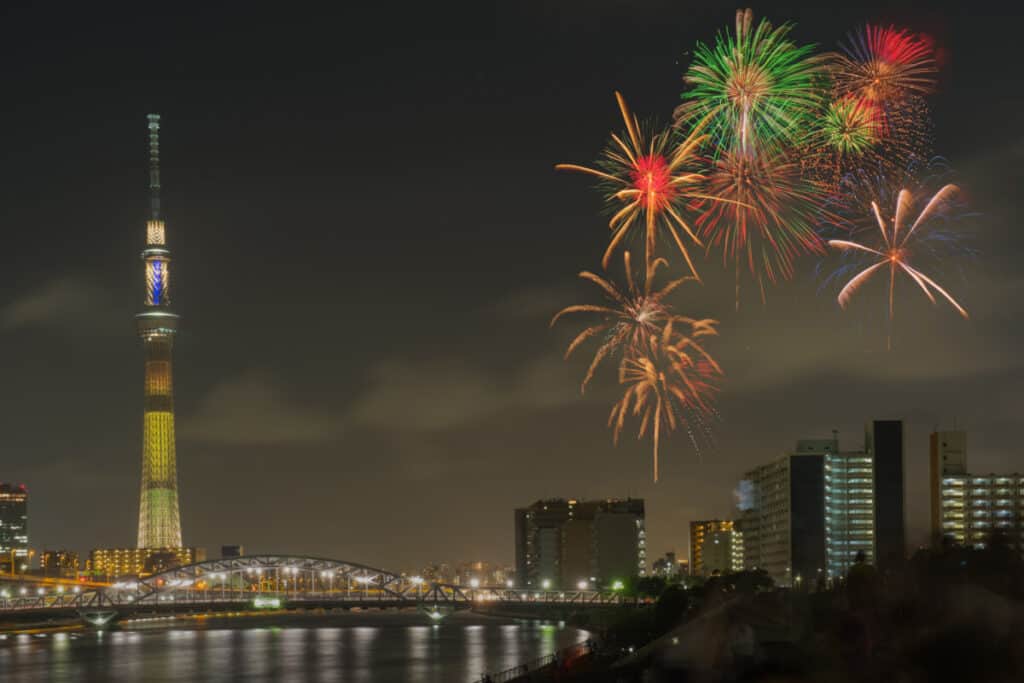
A great starting point before visiting the following attractions along Sumida River in Sumida Park. This gorgeous park offers a view of Japan’s famous cherry blossom in spring.
Sumida River Fireworks Festival
It’s also a great option for watching the famous fireworks festival if you are in the area in the summer.
Kiyosu Bridge
The Kiyosu Bridge offers an expansive and scenic view of the Sumida River, especially if you take a stroll along the bridge at night. The Kiyosu Bridge is just a short walk from the Kiyosumi-Shirakawa Station.
While the views from the Kiyosu Bridge are beautiful at any time of the day, the bridge does light up at night, creating a breathtaking experience and unique view of Tokyo.
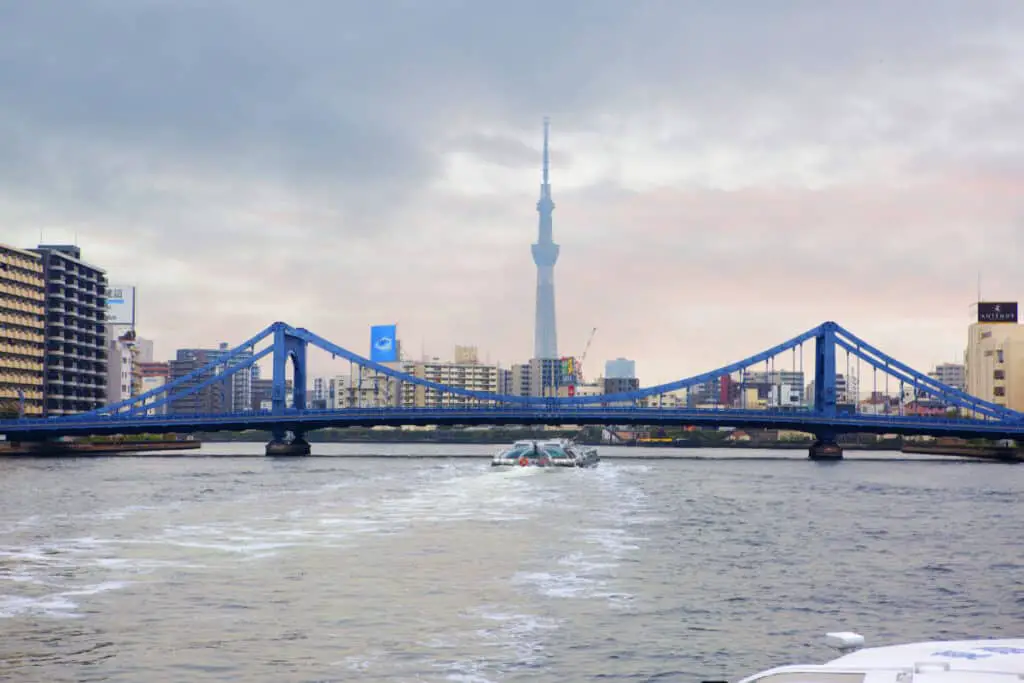
Kiyosu Bridge Location Via Google Maps
The bridge is also a piece of architectural history for Japan and has been named a national as well as a cultural asset of importance.
Asahi Beer Hall
The Asahi Beer Hall along the Sumida River is one of the most fascinating pieces of architecture you will ever see. The building is modeled after a beer mug, with a signature gold structure at the top to symbolize beer froth.
The building also houses the headquarters for Asahi Brewery, which produces popular Japanese beer and other products throughout Japan.
While the company has seen many changes over the years, it has been in existence since the late 1800s.
Asahi Beer Hall Official Website (Google Translate Needed)
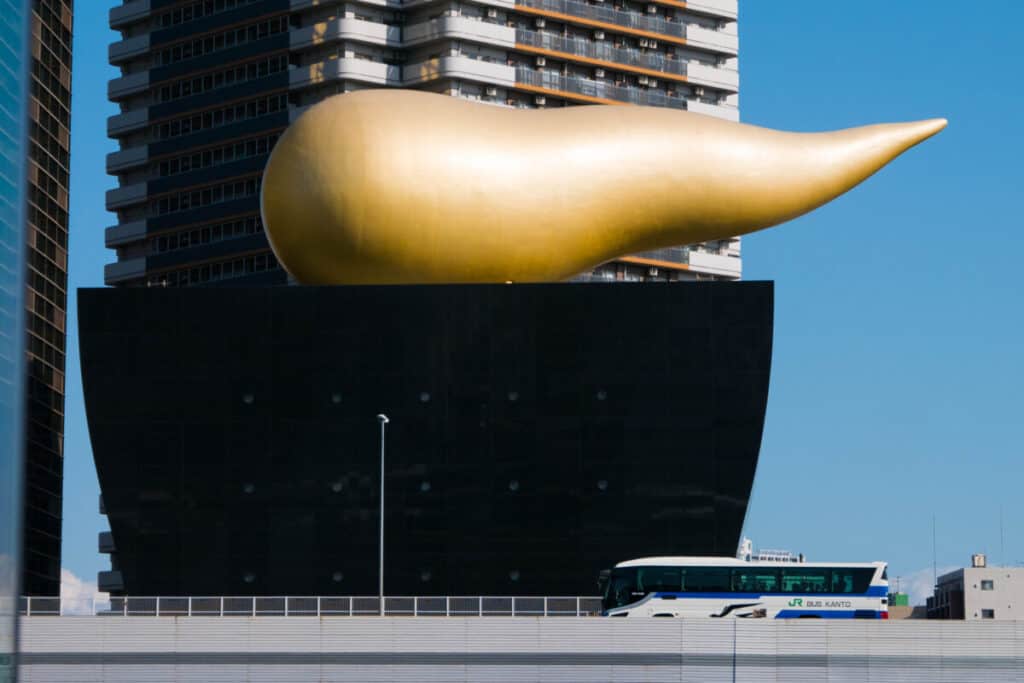
Tsukuda-Jima (Island)
The Tsukada-Jima Island is also known as the Island of Cultivated Rice Fields. This charming little town offers a lot of experiences that allow you to learn much more about Japanese culture.
This includes some shops that sell typical Japanese items, as well as some significant religious products related to an old Shinto shrine. The shrine is named Sumiyoshi-jinja.
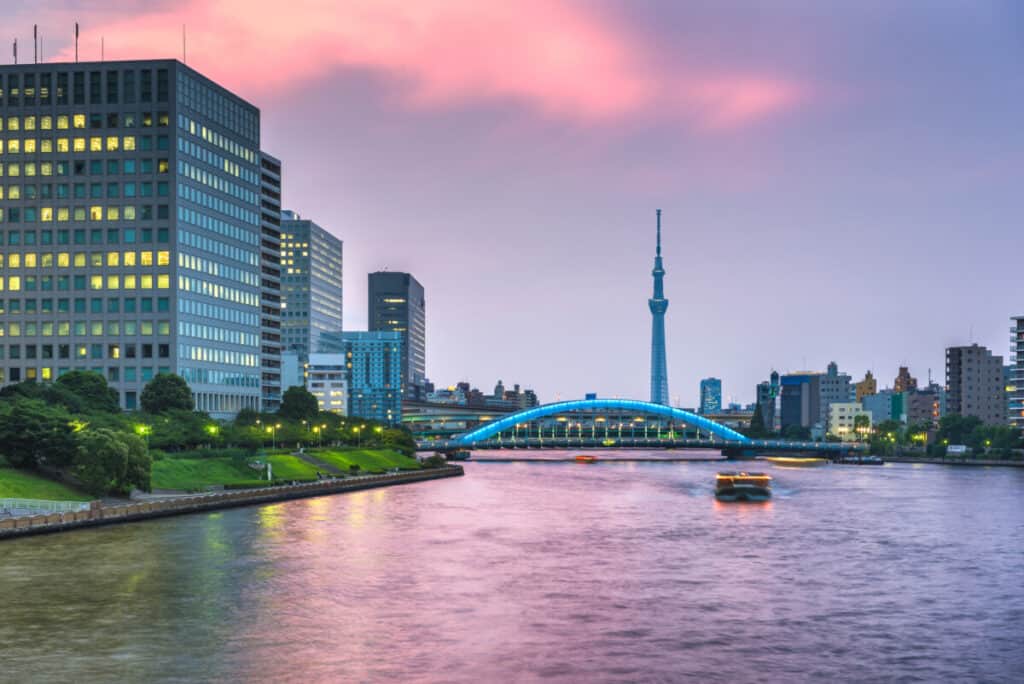
Tsukada Shima Island Location Via Google Maps
There is a lot of interesting history surrounding the island’s creation. It was built by Tokugawa Ieyasu who came to the area from Osaka with the help of Tsukada fisherman.
Ieyasu was responsible for establishing the shogunate government in Edo in the 1600s.
Yanagi Bridge
This bridge overlooking Sumida River is also known as Willow Bridge or Yanagibashi Bridge. The area is so picturesque, it has been the inspiration for many popular Japanese works of art.
The area offers more than just beautiful scenery, however. There are also shops and plenty of delicious dining experiences to be had. The bridge is also considered a historical site.
There is also the opportunity to ride a tour boats along the river.
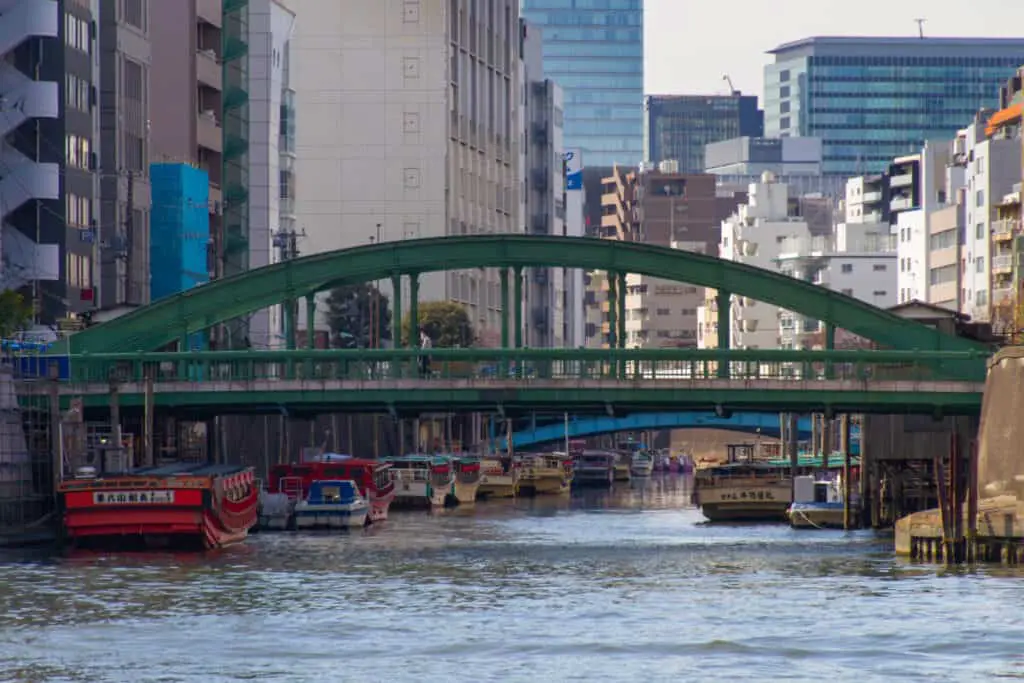
Komagata Bridge
This bridge, built almost 100 years ago, is distinct in that it’s all blue. The bridge was built after the Great Kanto Earthquake and was named after Komagata-do Hall, who was an esteemed member of the Senso-ji Temple.
There’s a little area on the bridge where you can take a seat and take in all of your surroundings. You are also able to see a gorgeous view of the Sumida River, as well as some of the beautiful landscapes that Tokyo has to offer.
Komagata Bridge Location Via Google Maps
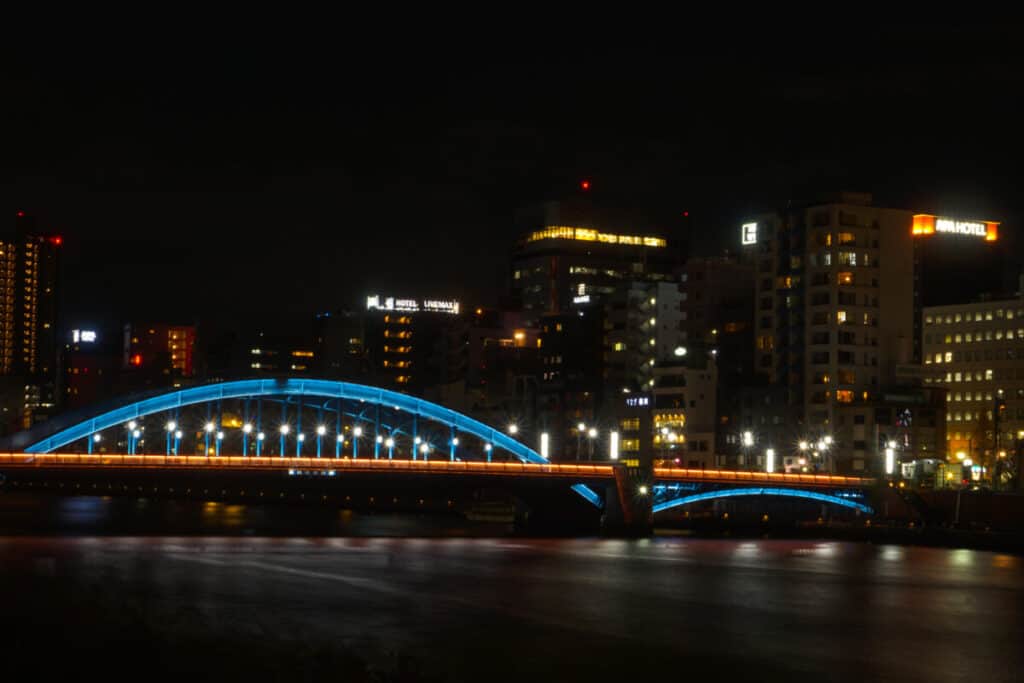
Eitai Bridge
This bridge has been a part of Tokyo for hundreds of years. You can either take a ferry ride below the bridge or take a stroll along the expansive bridge.
The bridge was originally built with timber, but unfortunately, it had collapsed in the 1800s and then was destroyed by the Great Kanto Earthquake.
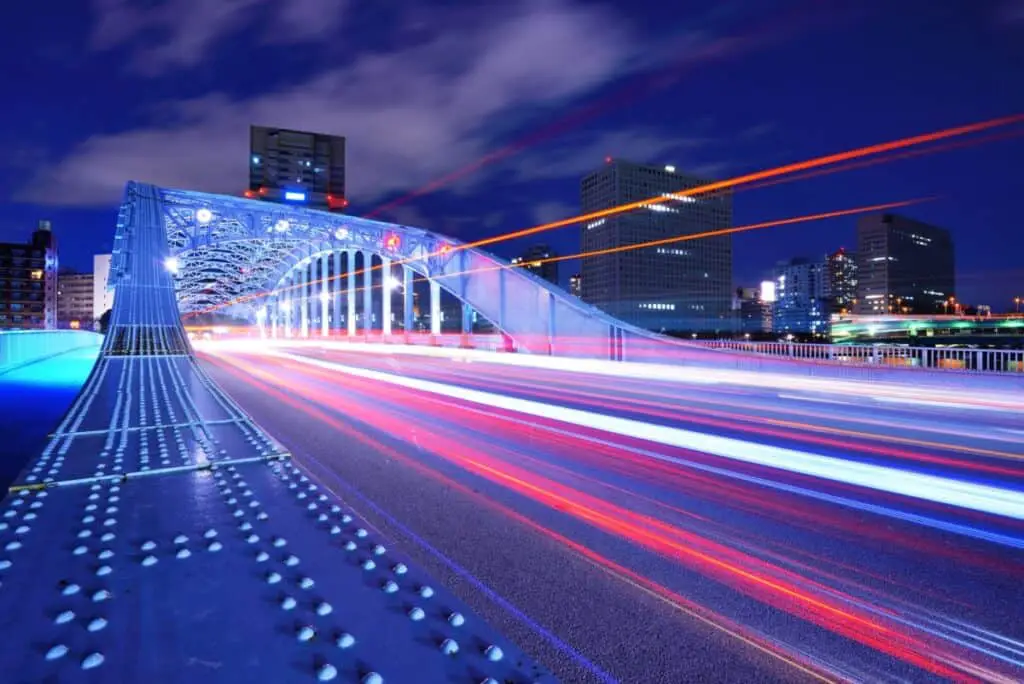
When the bridge was rebuilt, it was made with blue steel, and the uniquely colorful bridge still stands sturdily today after seeing all that tragedy. It’s made even more beautiful at night when it lights up.
Basho Shrine And Statue
Basho was a monumental figure of Japanese history, as he is the person who developed haiku poetry. He is also celebrated in Japan for his overall contributions to literature and art. The statue commemorates all that he contributed to Japan, and he is an interesting figure to learn more about.
Sites Related To Matsuo Basho Haiku Master
The shrine features a stone statue of Basho, as well as a reconfiguration of what Basho’s home looked like, and a monument with one of his famous poems.
Hama Rikyu Garden
Japan is known for its incredibly beautiful gardens, and the Hama Rikyu Garden is no exception. The garden being located so close to the river just adds to its charm. The garden also features relaxing ponds throughout the garden.
There is also a teahouse located in the garden where visitors are able to sit back and relax and take in all the lovely nature surrounding them. As with many landmark locations in Japan, the garden also has an interesting history.
Hama Rikyu Garden Official Website
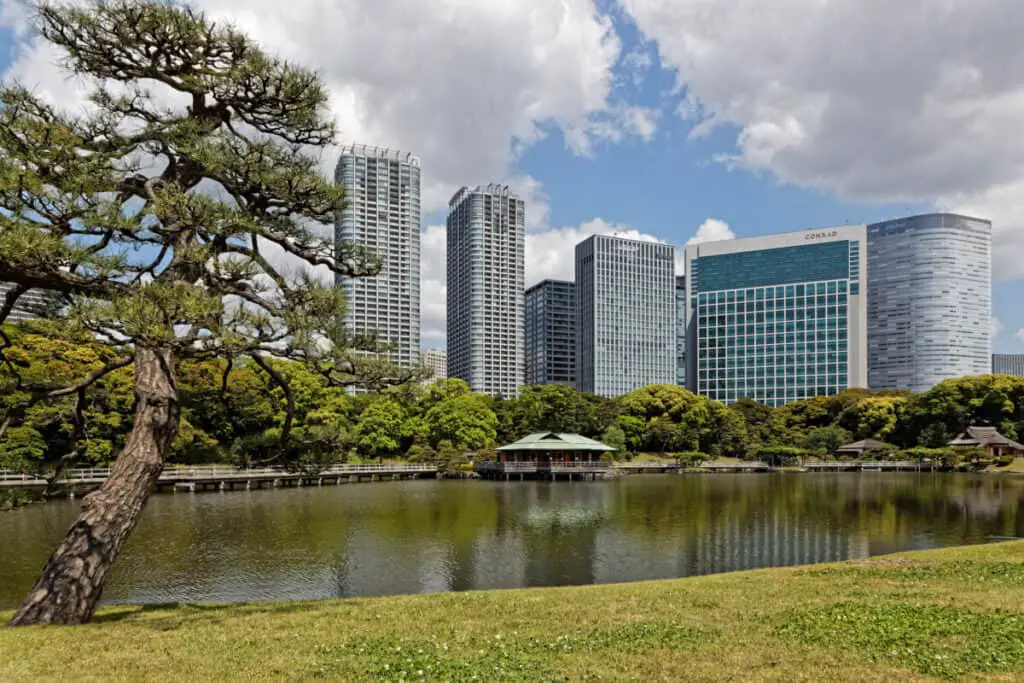
Walking Hama Rikyu Gardens Video
The garden was originally a duck hunting area and feudal lord’s residence back in the Edo period until it became an imperial palace and more private garden.
Hama Riky Gardens Location Via Google Maps
It was opened to the public eventually and still is today, but you can still see old relics from its origins scattered throughout the garden.
Umaya Bridge
There are so many bridges around Sumida River, but there are none quite like the Umaya Bridge. The bridge features signature triple arches unlike any of the other bridges in the area.
The name translates to horse stable, and thus, there are many horse statues decorating the bridge. The reason for the name dates back to the Edo period, where there were horse stables in the area.
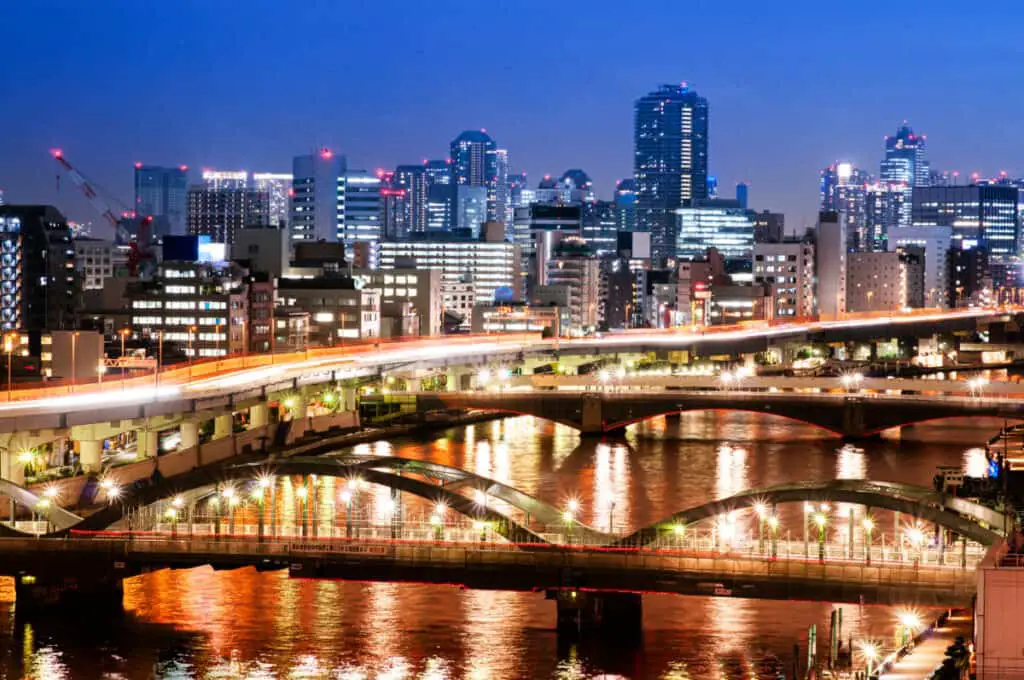
You can take a stroll on the bridge and take in the surroundings, or travel underneath the bridge on a cruise down the river. It’s also a great vantage point if you are planning on visiting the Sumida River during the fireworks festival.
Tokyo Skytree
The Tokyo Skytree is a massive structure and broadcasting tower that allows for some breathtaking views of Tokyo and the Sumida River. Additionally, there is also an opportunity for shopping and entertainment, as well as some delicious cuisine.
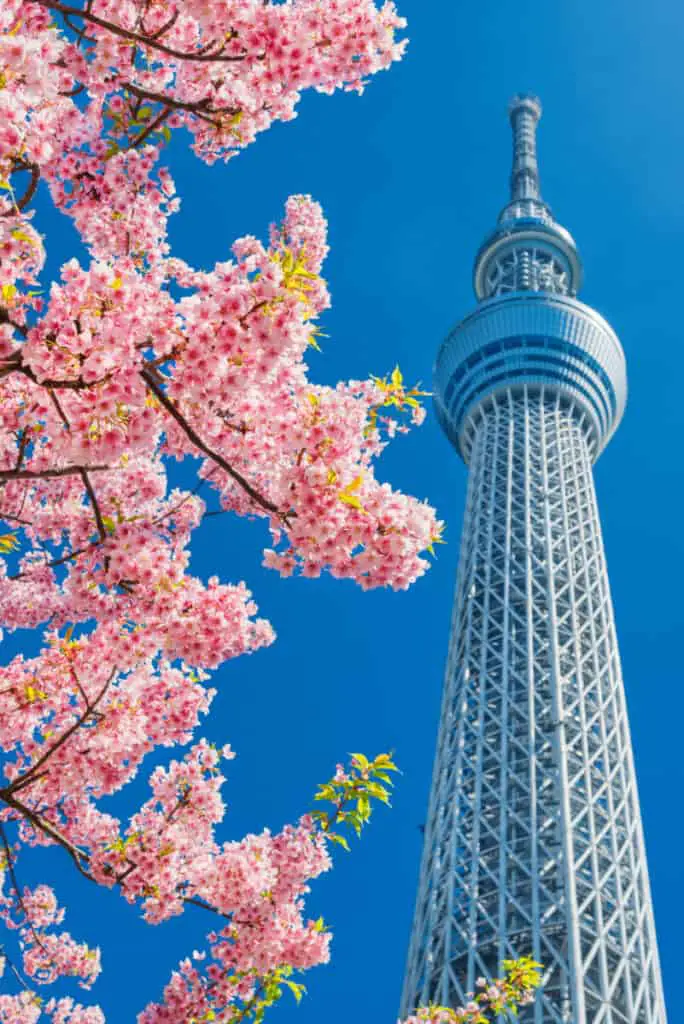
The Tokyo Skytree is also considered the tallest free-standing tower in the whole world being 634 meters tall.
The tower lights up at night as well and can be seen throughout much of Central Tokyo. It has become a landmark and a symbol of sorts for the city of Tokyo.
Tokyo Skytree Official Website
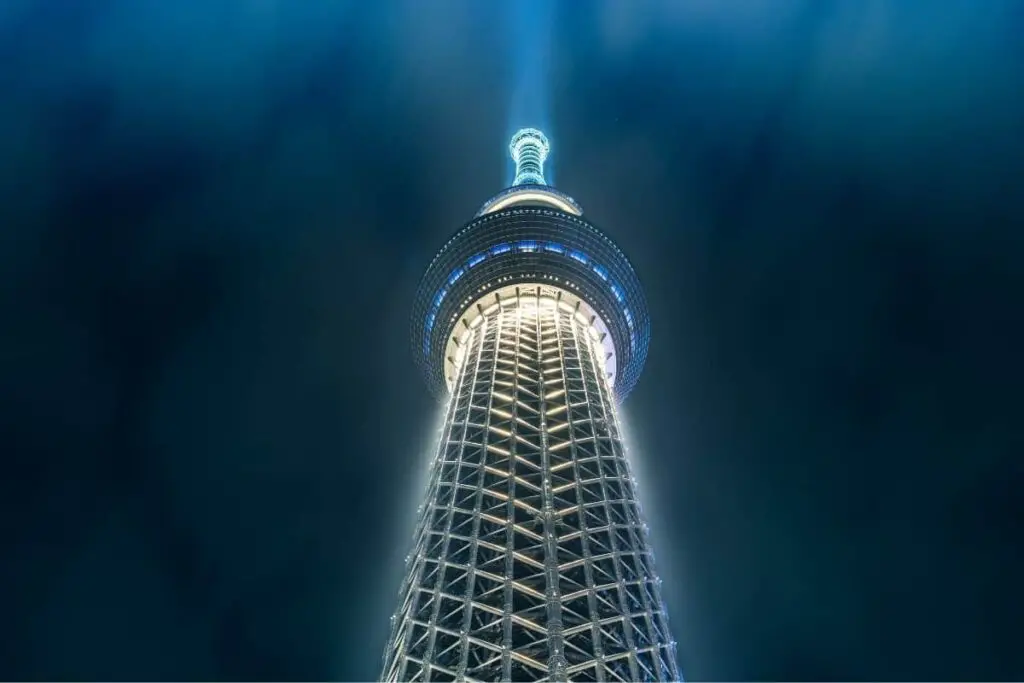
The shopping and dining area is just beside the Tokyo Skytree, where you can also find a lot of exciting things to do like visit an aquarium or a museum. There are also multiple observation decks where you can simply take in your surroundings. An Upscale restaurant is also located inside the Skytree.
Skytree Restuarant Musashi 634










